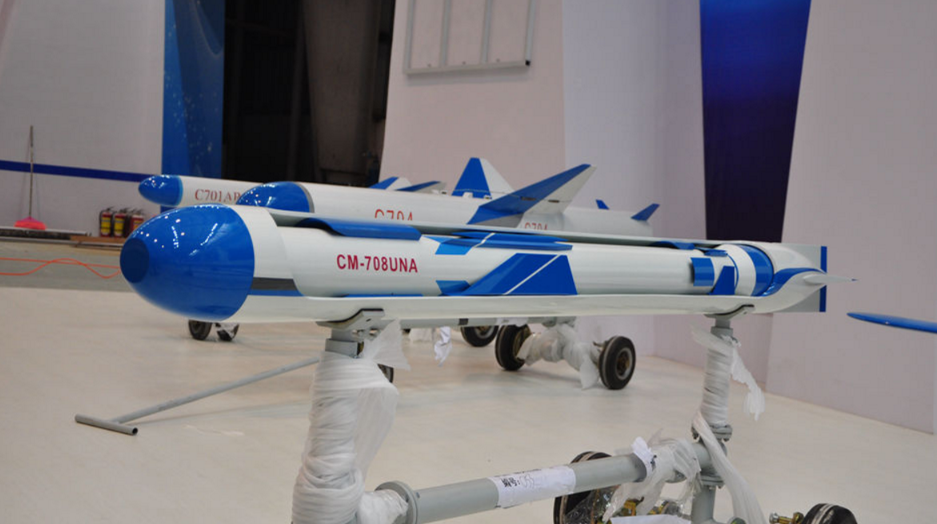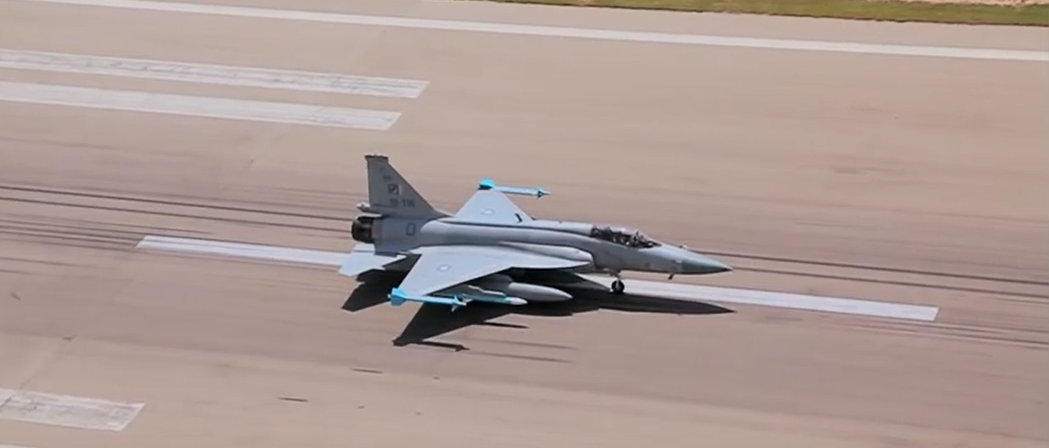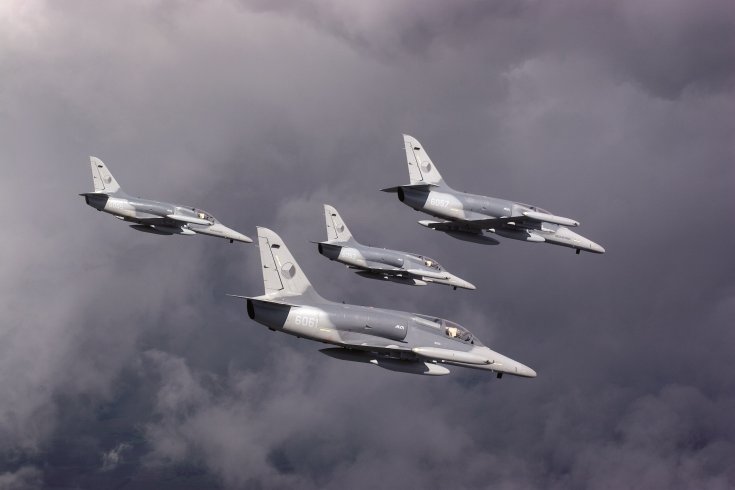3018Views 14Comments

DSA 2016: China shows off new anti-ship missile and drone boat
By Bilal Khan
At the 2016 Defence Services Asia (DSA) exhibition, the China Aerospace Science and Industry Corporation (CASIC) revealed its new submarine-launched anti-ship cruise missile (ASCM), the CM-708UNB.
The CM-708UNB is being marketed as having a maximum range of 290km, just shy of the 300km limit put in place by the Missile Technology Control Regime (MTCR). Its predecessor, the CM-708UNA, is a shorter-range ASCM at 128km. IHS Jane’s notes that the CM-708-series is derived from the C-802-line of anti-ship missiles (AShM), with the CM-708UNB being based on the C-803.
As an ASCM, the CM-708UNB is designed to be launched from a submarine’s torpedo tubes. ASCMs (such as the UGM-84L sub-Harpoon) are encapsulated and supported by a rocket-booster. The missile is launched through the torpedo tube, travels through the water, and then reaches the surface. Once in the air, the missile loses its capsule or casing, and (with the help of its booster), proceeds towards its intended target. Like the CM-708UNA, the CM-708UNB is being marketed for export.
Pakistan concluded a purchase of eight air independent propulsion (AIP) equipped submarines from China late last year, it is possible – if not almost certain – that the CM-708UNB will join the submarines. With its 290km range, the CM-708UNB would offer a genuine boost to the Pakistan Navy’s area denial capabilities, which are being strengthened through the procurement of shore-based AShM as well as fast attack crafts.
Given the availability of the CM-708UNB for export, one should ponder about the People Liberation Army Navy (PLAN)’s own capabilities. By any measure, the CM-708UNB is a serious product offering, one can only imagine how much more capable the PLAN’s own ASCMs must be at this stage.
Moreover, China is also marketing one of its unmanned surface vehicle (USV) programs, a 13 metre high-speed interceptor. The USV concept was originally revealed in 2015 and is currently going through tests with the PLAN, but an export variant is expected to be on offer within a year. The USV’s maximum speed is being billed at 80 knots, which is about 148km/hr (or three times the speed of the PN’s F-22P frigates).
Given the limited financial means of the Pakistan Navy, solutions such as USVs could be a means through which the Navy could bridge certain capability gaps. Imagine the prospect of very fast and stealthy USVs equipped with laser-guided or imaging infrared-tipped Hellfire-II class missiles, or lightweight torpedoes, or simply electro-optical surveillance and data-link equipment. USV (as well as UAV and UUV) development is certainly an area the Pakistan Navy should consider exploring.



14 Comments
by jigsaww
The range is quite less to be frank. Needs to be in the range of 500 – 700 km to start with.
Navy has clearly stated its need for more surface boats in future and i think the strategy is coming through with induction of more FAC and patrol boats in addition to coastal defence, at least to start with. There is clear need for more frigates, subs, and destroyers in the long run. Maritime space surveillance needs will become stronger. They need to launch more sats.
Gwadar will face alot of challenges once operational and PN will have to be deployed in EEZ 24/7, under, above, and on water.
Hindustan has set aside clear budgets and agendas on politically and physically destabilise CPEC. Pakistan should expect attacks coming from Hindustani own RAW and its cronies in future and beef up with that in mind.
by MT
Naval version of cheeni babur is struggling as pak have no clue on how to proceed
pak has almost nill capabilities in
1.solid rocket booster thrust vectoring
cheeni hexagon chemicals only provide jet vanes boosters for shaheen et al.
2. pak needs 7-8 meter long torpedo tubes with more than 650 mm diameter even if it acquire cheeni ejection tech along with long torpedo tubes.
Currently all torpedoes tubes of agosta -ECAN series are 6 meter or less
Given israeli popeye torpedo based Slcm which fit in old 6 meter tube with 552 mm diameter could barely fly 400 km; cheen can never achieve israeli capabilities until it increase diameter and length of tube.
With china concentrating on Mirv slbm they have no incentive to have torpedo based SLCM with nuclear capabilities so eventually pak ll have to buy 8 of these cheeni copt cat of old kilo class to get hold on cheeni SLCM tech.
Currently pak have even failed to cold launch/eject primitive prototype from underwater.
so there is not of pleading and begging ongoing to get SLCM tech & pak have agreed to pay 4-5 bill $ for 80 era cheeni SSK
by jigsaww
Tell me about it when they start pouring over your empty heads.
It will be the last thing on your racist head then.
by saqrkh
We’ll wait for the details to play out in real life, thanks 🙂
by saqrkh
The Navy probably has its eyes on AAW capable FFGs, and for good reason. An FFG with MR/LR SAM can offer some coverage to SSKs (from IN Poseidons), not to mention ample room for LACM. But a few Sa’ar 5 or 6-like corvettes wouldn’t hurt either, especially to bolster up littoral ASW in wartime, and to serve as OPV in peacetime.
by MT
Ha ha .
by Hindukush
These cheeni missiles can home in on the dot on your head dumass
by Ashi Sidhu
FAC ,Patrol boats i dont understand what are we talking about here coast guard or navy
looks like indian coast guard can handle atleast pak navy surface combatants LOL!!
india has similar American FAC given to BSF(border security force ) in sir creek region while navy can enjoy its time
hehehe….
by jigsaww
Exactly. You do not understand.
These are for hindustani terrorists that are to be sent on sneak through missions that require constant patrolling and surveillance. The hindustani RAW is running a special CPEC destabilization desk at HQ (and don’t take that for a physical desk now) along with funds and training support to its assets. For such low intensity ops, such assets suffice and does not require deployment of warships or nuke subs. Please don’t make me teach you everything in military warfare. Use your own head too once in a while.
The fact that you do not understand tactics of insurgency and COIN warfare have you confused.
Ultimately there will be additional frigates and possible destroyers deployed for possible war scenarios.
by Mustafa O
This maaaderchod has nkthinh else to say other than boast defunct failed indian foreign copied products and talk low chinese weapons.
Well modi toady, when u have attained tech know how of anti satellite missiles, himads, cruise missiles, carrier killer, send man in space, develop ur own space station, have 90% of defence products from indian firms, then talk low of cheen products. For the foreseeable future, atleast 30years, indians will continue to rely heavily on foreign imports.
So cheeni tech and weapons are way ahead of u blackee stinky hindu tech. Dont poke ur nose in ur own butt now. Shut the hell up
by Mustafa O
Oh maaderchod, which language u understand.. Are u really military tech enthusiast. Infra red systems are not used to track missile launches. Its ir value is too low from space up at that distance to detect, what to talk of tracking it. U need to have radars to do that. Now stop f.. k.. g urself
by MT
scanning infrared sensor, designed to acquire ballistic missiles in the early stages of flight.
a tracking infrared sensor, designed to follow missiles, warheads, and other objects such as debris and decoys during the middle and later stages of flight. The tracking sensor would be cooled to very low temperatures.
SBIRS Low’s original deployment schedule was 2010, the date when its capabilities were said to be needed by the National Missile Defense System.
by MT
At height of 1000 meter
Radar’s Radial range = 130.64KM
For 2000meter & 3000 meter height, radar range is 187 KM and 225 km respectively
It means that Nakshatra radar can see all target at height = 0 meter with in radii of 130 Km.
Applying this formula:
If you include the shadow region as explained in the above fig, then radar can see around 2 times more distance which is 250+KM radii for targets flying at height of 1460 meter and they can detect 500+Km radii distance for target flying at height of 11 KM!
by Mustafa O
Wish i cud engage u 1 vs 1 face to face. U wud be dumbfounded with ur stupid dodgedly answers.
Now u moadi toady hindu scum has flipped from an infra red detection system to radar systema. U shit hole, why this sudden change in heart. Our respected madrassa graduates are more literate than u stinky rss grads. Seem now u have switced to radar detection theory on ur satellites, after getting humiliated. Now all the above doesbot make any sense.
Who talked about radar detection range s wrt earrhs curvature. Wonder why have u brought this up. About radars and fighter, its u who needs knowledge. Not from Its u rss grad who needs real knowledge and read 2nd Book of radars and not crude, wikipedia to brush up ur knowledge.
And reply once… DH